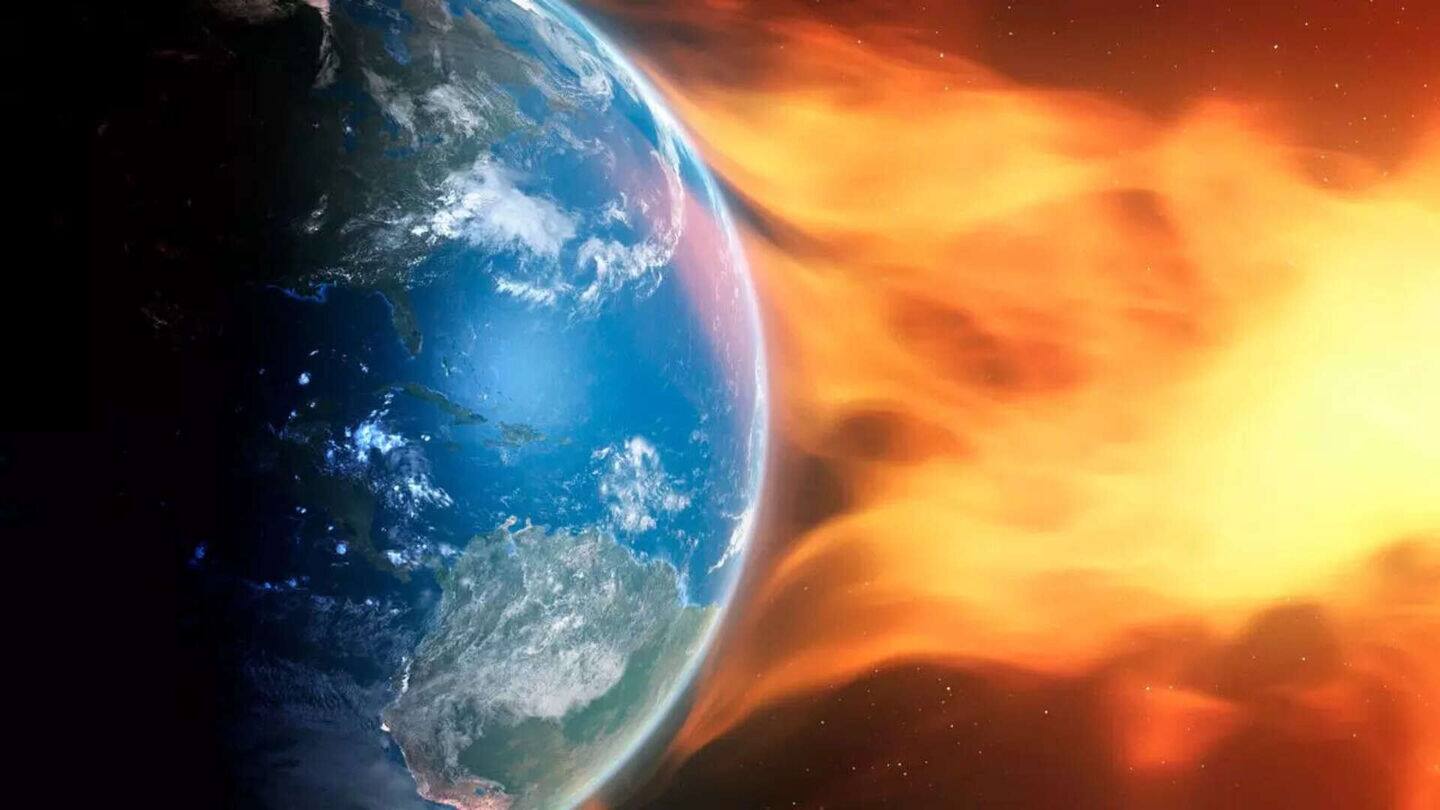
NASA issues alert as 2025's most-powerful solar flare hits Earth
What's the story
NASA has issued warnings about a significant solar storm heading toward Earth, resulting from an X2.7-class solar flare—the most intense recorded in 2025. This strong solar activity originates from the Sun's most active region as it rotates into view and comes amid the peak of the Sun's 11-year solar cycle. The storm is expected to cause radio blackouts, GPS signal disruptions, and widespread auroras in several regions. Scientists are monitoring additional sunspots that may lead to further disturbances.
Solar impact
Solar flares: Sudden bursts of radiation
Solar flares are sudden, intense bursts of radiation from the Sun's surface, usually associated with sunspot activity. The recent X2.7-class flare is one of the most powerful types, capable of affecting Earth's upper atmosphere immediately. Such solar flares can disrupt high-frequency radio communications, aviation systems, and navigation networks on the sunlit side of our planet where they strike directly.
Disruptions
Recent flare's impact and potential risks
Recently, an X2.7-class solar flare led to temporary radio blackouts in the Middle East, lasting for approximately 10 minutes. The disruption was caused by a powerful wave of radiation that disrupted Earth's ionosphere, according to NOAA. NASA has warned that continuing solar flares and coronal mass ejections (CMEs) from the area could affect power grids, satellites, and astronauts in space.
Sun's cycle
Solar maximum phase and its effects on Earth
Currently, the Sun is in a phase called solar maximum, part of its normal 11-year cycle. During this phase, the Sun's magnetic poles flip, causing increased sunspot activity and more frequent and intense solar storms. Consequently, Earth becomes more vulnerable to space weather events such as geomagnetic storms, radio signal disruptions, and satellite malfunctions.
Light shows
Solar storms create stunning auroras
While solar storms can lead to technical disruptions, they also produce stunning light displays called auroras. These happen when charged particles from the Sun interact with Earth's atmosphere. The UK Met Office has predicted increased auroral activity for May 22, with visibility expected across the UK and Ireland. NASA and other space weather agencies are closely monitoring sunspot region AR4087, which is likely to intensify as it fully rotates into Earth's view.
Preparation
Precautionary measures for potential disruptions
While most of us won't be directly impacted by these solar events, it is recommended to be prepared for minor disruptions to communications, GPS, and electricity in rare cases. Aviation, maritime, and satellite industries are recommended to keep an eye on alerts from NOAA's Space Weather Prediction Center and NASA's Solar Dynamics Observatory. For the public, this event could be a rare chance to see one of nature's most beautiful light shows.